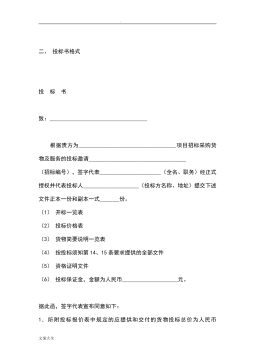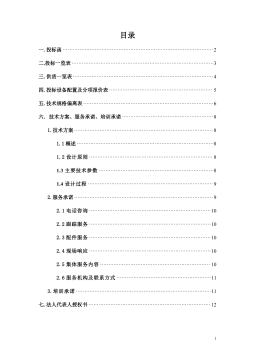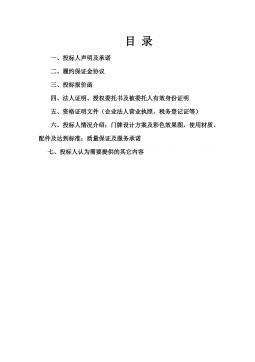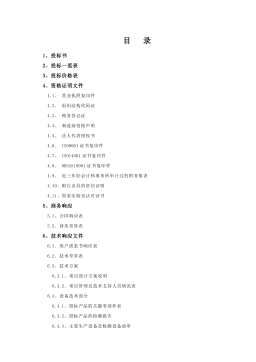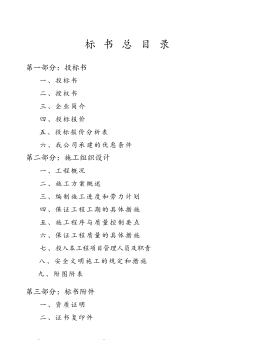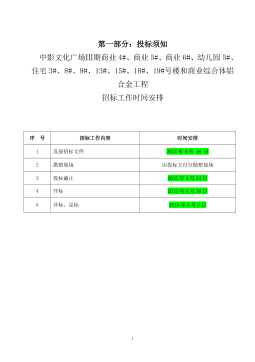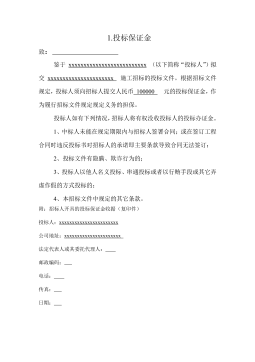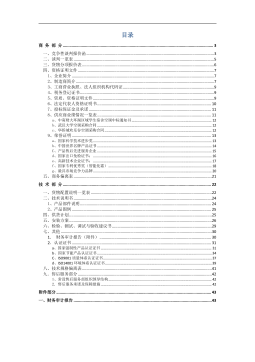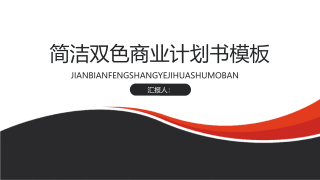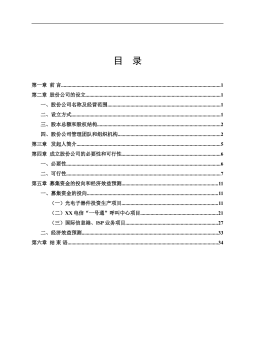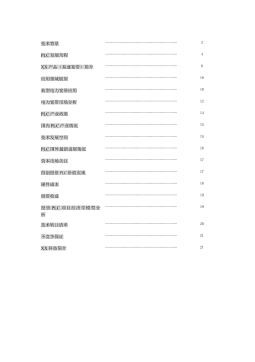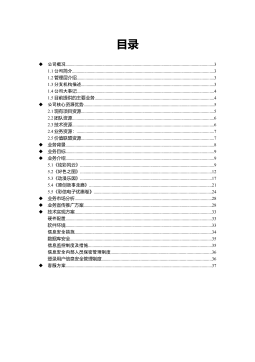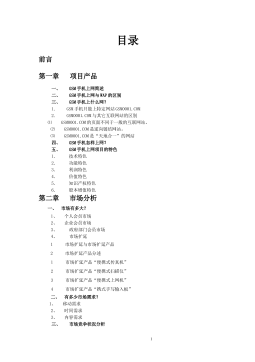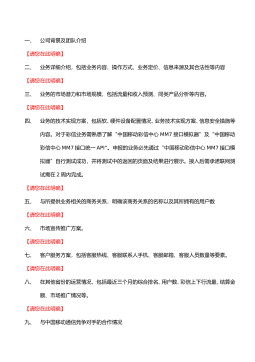我国上市公司信用风险度量的实证研究
VIP免费
硕士学位论文
4
摘要
2007 年8月,美国次贷危机全面爆发后迅速波及全球,导致国际金融市场动
荡,并威胁到经济的稳定增长。由于我国金融市场尚未完全开放,国内金融机构
对海外金融市场的参与程度不高,因此,次贷危机对我国金融体系的影响十分有
限。但在经济全球化的今天,随着次贷危机引发的美欧经济放缓甚至衰退,我国
经济也难以独善其身。因此,如何有效地控制和度量信用风险已经成为各国金融
监管当局、金融机构和投资者关注的焦点。市场经济本质上是信用经济,而上市
公司是市场经济的重要参与者,其信用状况尤其应该受到重视。在我国加入 WTO、
新巴塞尔协议实施等背景下,学习和借鉴国际先进的信用风险度量技术,建立适
合我国的信用风险度量模型,是我国金融业面临的一个重要课题。信用风险度量
作为一种防范信用风险的监督手段,是市场经济发展到一定阶段的必然产物,其
对市场经济的重要性和促进作用已得到了理论研究的证明和发达国家实践的检
验。本文在总结前人研究成果的基础之上,运用理论分析和实证研究相结合的方
法对这一问题进行了深入的探讨。本文分五部分展开:
第一章先指出了论文的研究背景、研究意义以及研究目的;然后总结了国内
外信用风险度量的研究现状;并进一步阐明了本文的研究思路、研究方法和结构
安排;最后提出了论文的可能创新之处。
第二章阐述了公司信用风险度量的理论基础。首先,对与信用相关的概念进
行了界定;接着是我国上市公司信用风险的一般性分析,指出了上市公司信用风
险产生的原因、特点、性质及目前我国信用风险度量中存在的问题;最后,对上
市公司信用风险度量的相关理论进行了简单的总结。
第三章论述了公司信用风险度量模型的发展历程。首先,总结了传统的公司
信用风险度量模型;接着总结了现代的公司信用风险度量模型,并对二者进行了
比较;在此基础上选取了比较适合我国上市公司信用风险度量的模型。
第四章对我国上市公司信用风险度量进行了实证分析,是本文的核心。首先,
对论文的研究对象进行了界定,并按照一定的原则选取样本;接着,选择了 35 个
财务指标,使用 Logistic 回归模型进行公司信用风险的实证分析,最终确定了一个
含有 10 个因子的 Logistic 信用判别模型。通过样本的检验,最终得到了较为理想
的预测准确度。实证结果表明我国上市公司的财务数据可以有效的用来预测信用
风险。
第五章为本文的研究结论和政策建议。结论表明,因子分析可以和 Logistic 有
效地结合;越接近企业被 ST 的年份,模型预测的准确率越高。针对本文的研究成
果,从公司信用风险管理的角度,提出了相应的政策建议,作为本文的落脚点。
硕士学位论文
5
最后,指出了本文的局限与不足,并为后续研究提供了思路和切入点。
关键词:上市公司;信用风险;因子分析;Logistic 回归
硕士学位论文
6
Abstract
After July 2007, US’s subprime mortgage crisis broke out in an all-round way and
spread to the World quickly, which led to the international financial markets’ turbulence
and threatened the economy’s steady growth. Because China's financial markets haven’t
yet fully opened and domestic financial institutions aren’t highly involved in overseas
financial markets, therefore, the direct impact on China’s financial system caused by
subprime mortgage crisis is very limited. However, under today’s economic
globalization, as the economic slowdown or even recession in the United States and
Europe triggered by subprime mortgage crisis, China's economy can’t be an exception.
So how to effectively control and measure credit risk plays a key role in the
decision-making of financial regulatory authorities、financial institutions and investors.
Market economy is essentially credit economy. The listed companies are a major
participant of market economy, so the credit status of listed companies should be paid
close attention to. Under the background of China’s entry into WTO and the implication
of Basel II, it becomes an important task faced to our country’s financial industry to
take the international advanced technology of credit risk management for reference and
establish the credit risk measurement models suitable for China. As a means to avoid
credit risk, credit risk measurement is the outcome for the development of market
economy. The importance and the improved function for market economy have been
proved by the theoretical research and tested by the practice in developed countries.
This paper did a deep research to the issue by combining theoretical analysis with
empirical study, based on summing up the former research achievements. The structure
of this article is as follows:
The first part started with the background、the significance and the purpose of this
article; then summed up the status of credit risk measurement at home and abroad; set
out the thread、the method and the structure; finally put forward the innovation points.
The second part elaborated the theoretical basis on company’s credit risk
measurement. Firstly, defined relative concepts; then talked about the general analysis
of China’s listed companies’ credit risk and relative theory on listed companies’ credit
risk measurement.
The third part explained the models on listed companies’ credit risk measurement.
Firstly, introduced traditional and modern credit risk measurement models; then made a
comparison.
The fourth part is the core of this paper: empirical study on listed companies’ credit
risk measurement. Firstly, defined the object of study and chose samples according to
certain principles; then selected 35 financial indicators, used Logistic regression model
for empirical analysis of corporate credit risk and ultimately set a Logistic model
containing 10 components. Through the sample examination, ultimately get satisfactory
prediction accuracy. The empirical results show that the financial data of listed
companies in China can effectively be used to predict credit risk.
硕士学位论文
7
At the last part, we get the conclusion of this article and put forward some policies
and suggestion to improve listed companies’ credit risk measurement. Furthermore, we
pointed out this paper’s restrictions and restrictions in order to provide point cut for
subsequent research.
Key words: listed companies; credit risk; factor analysis; Logistic regression
硕士学位论文
8
目录
第一章 绪论.........................................................1
第一节 研究的背景、意义及目的...................................1
第二节 文献综述.................................................3
第三节 研究的思路、方法及结构..................................13
第四节 创新点..................................................15
第二章 上市公司信用风险度量的理论基础..............................16
第一节 相关概念的界定..........................................16
第二节 我国上市公司信用风险的一般性分析........................19
第三节 上市公司信用风险度量的相关理论..........................20
第四节 本章小结................................................24
第三章 上市公司信用风险度量模型....................................25
第一节 传统信用风险度量模型....................................25
第二节 现代信用风险度量模型....................................29
第三节 各种信用风险度量模型的比较..............................32
第四节 逻辑斯蒂模型............................................36
第五节 本章小结 ...............................................38
第四章 上市公司信用风险度量的实证分析..............................39
第一节 研究对象的界定..........................................39
第二节 研究样本的选取...........
...............................39
第三节 模型指标的选取..........................................39
第四节 指标的筛选与模型的构建............................
......41
第五节 实证结果与检验..........................................50
第六节 本章小结................................................52
第五章 研究结论与政策建议..........................................53
第一节 研究结论................................................53
第二节 政策建议................................................53
第三节 局限与不足..............................................54
参考文献...........................................................56
附录...............................................................60
硕士学位论文
9
第一章 绪论
第一节 研究的背景、意义及目的
一、论文研究的背景
我国经过 30 年的改革开放,已经初步确立起了社会主义市场经济体系。市场
经济本质上是一种信用经济,信用是整个市场经济的道德基石(王峰,2001)。可
以说,人无信则不立,企业无信则衰,国家无信则败。发达国家 100 多年的发展
历程无数次的证明,信用风险评估作为一种社会监督方式,是市场经济发展和成
熟不可缺少的一部分,是市场经济发展到一定阶段的必然产物(李慧云,2007)。
经济全球化和自由化浪潮导致信用不断膨胀,信用风险暴露越来越大且更加复杂。
如90 年代的拉美金融风暴、98 年的亚洲金融危机以及 08 年的美国次贷危机都直
接或间接由信用风险所导致。信用风险已成为各国金融业面临的核心风险。如何
准确度量信用风险也成为金融机构、投资者、政府监管部门关注的焦点。
我国还处在经济转型期,市场经济体制还不完善,与市场经济相关的很多法
律及规则不健全甚至缺失,导致我国信用体系发育程度低,信用秩序混乱。同时
企业信用风险意识也较差,体现在经济行为中就是违约现象不断出现。如大量银
行贷款逾期不还,成为呆帐、坏帐;企业间资金相互拖欠、三角债盛行等。这就
在一定程度上导致我国目前基本处于一种信用短缺和混乱状态。企业是重要的的
微观经济主体,企业信用缺失直接影响我国社会信用体系的完善。世界银行中国
代表处翻译的报告——《2020 年的中国:新世纪的发展挑战》中指出,中国经济
将面临四大风险,其中首要的就是国有企业的债务将使银行陷入困境,信用风险
随之提高(欧志伟,2001)。
近年来,上市公司信用问题受到学术界和实务界的广泛关注。上市公司财务
造假、损害金融机构和投资者利益的情况屡禁不止;上市公司因财务状况异常而
被特别处理也屡见不鲜。自 1998 年至 2001 年,银广夏通过伪造销售合同、虚开
增值税专用发票等手段,累计虚构销售收入 104962.60 万元,少计费用 4845.34 万
元,导致虚增利润 77156.70 万元,而实际上银广夏已连续两年亏损。东窗事发,
银广夏股价暴跌 93.1%,总市值蒸发 170 亿元以上,广大投资者损失惨重。此外,
还有多年演绎“东方不败”业绩的东方电子被发现财务造假,美尔雅在资金管理安全
性等方面存在严重问题,三九医药大股东严重侵犯中小股东利益,中科系、德隆
系的破灭等。上市公司信用的缺失,直接导致许多金融机构贷款无法收回,信用
风险成为金融机构面临的最大风险之一。
然而,我国目前的信用风险度量方法和手段还比较落后,主要表现在:对包
摘要:
展开>>
收起<<
硕士学位论文4摘要2007年8月,美国次贷危机全面爆发后迅速波及全球,导致国际金融市场动荡,并威胁到经济的稳定增长。由于我国金融市场尚未完全开放,国内金融机构对海外金融市场的参与程度不高,因此,次贷危机对我国金融体系的影响十分有限。但在经济全球化的今天,随着次贷危机引发的美欧经济放缓甚至衰退,我国经济也难以独善其身。因此,如何有效地控制和度量信用风险已经成为各国金融监管当局、金融机构和投资者关注的焦点。市场经济本质上是信用经济,而上市公司是市场经济的重要参与者,其信用状况尤其应该受到重视。在我国加入WTO、新巴塞尔协议实施等背景下,学习和借鉴国际先进的信用风险度量技术,建立适合我国的信用风险度...
作者:周伟光
分类:高等教育资料
价格:150积分
属性:64 页
大小:604.15KB
格式:PDF
时间:2024-09-20


